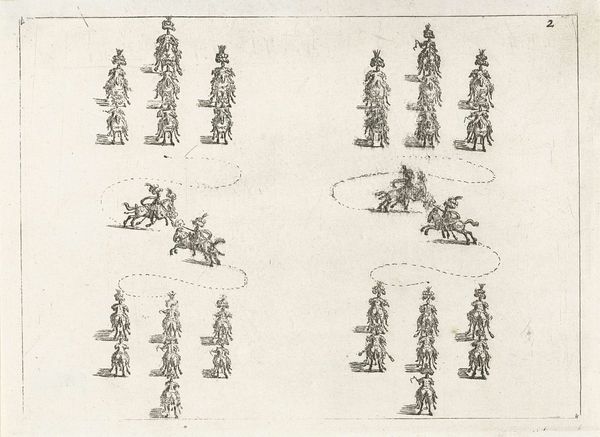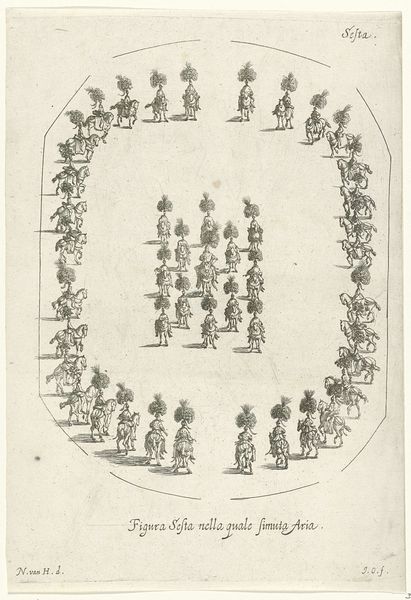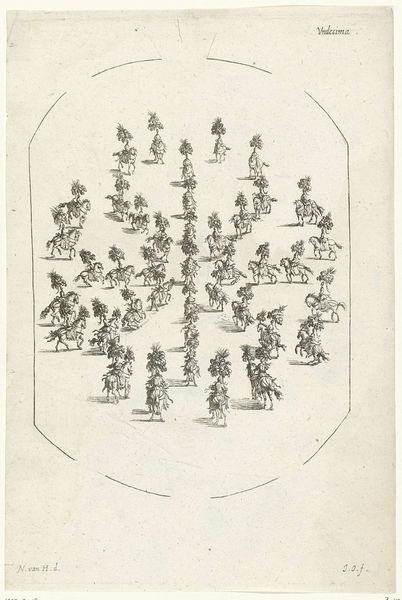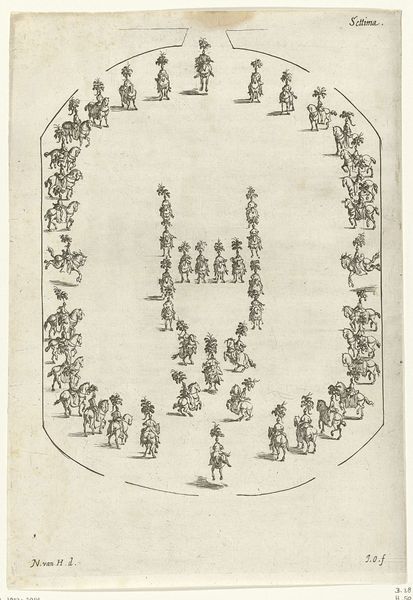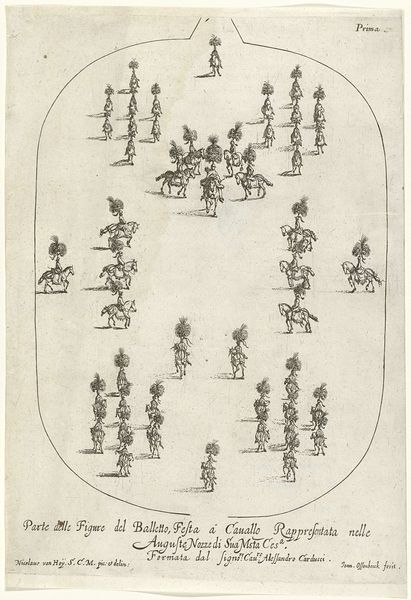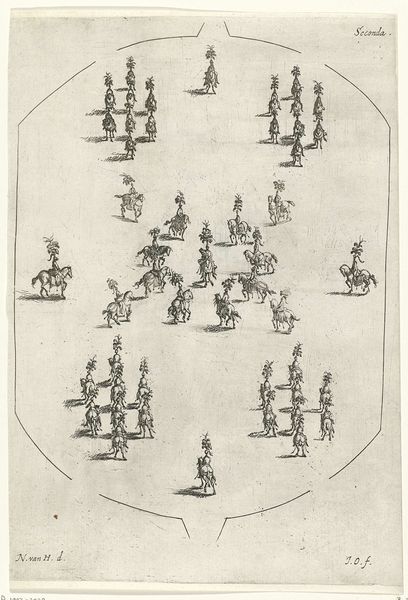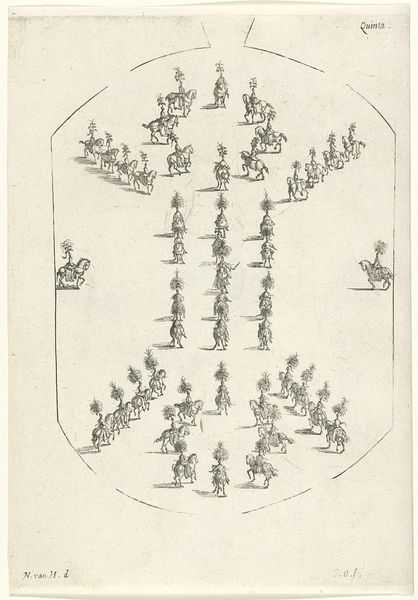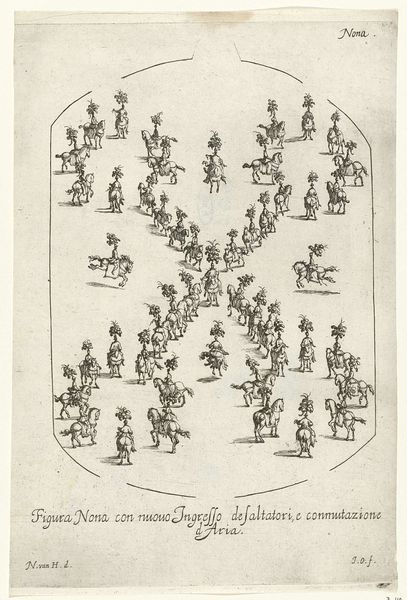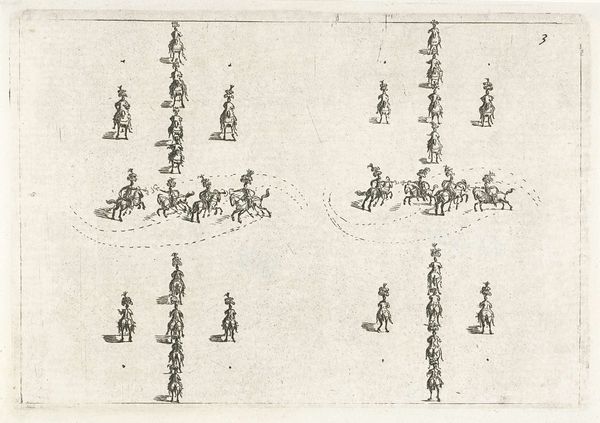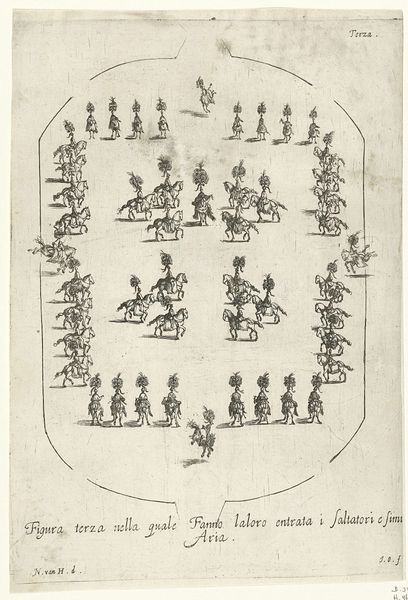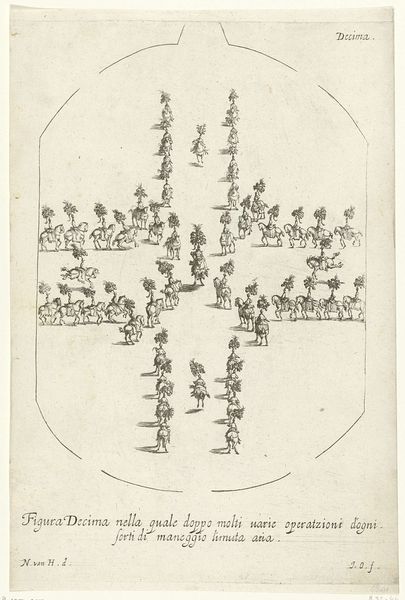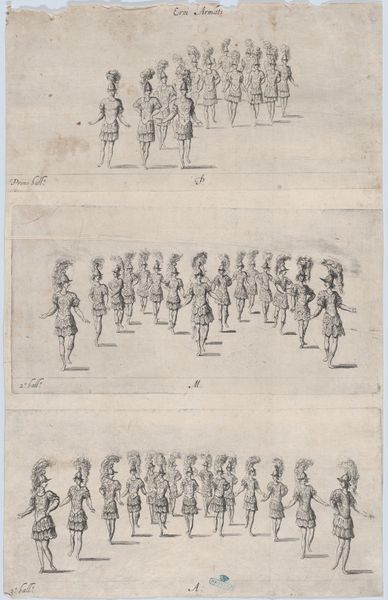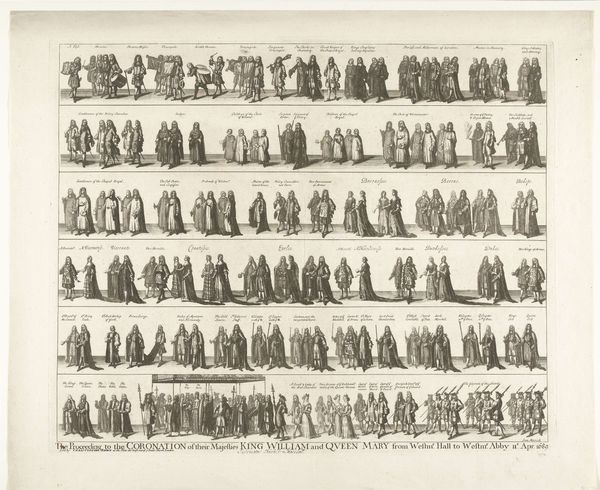
print, etching, engraving
#
baroque
# print
#
etching
#
line
#
history-painting
#
engraving
Dimensions: height 243 mm, width 175 mm
Copyright: Rijks Museum: Open Domain
Editor: So, this is *Ruiterformaties met drie groepen infanterie* by Jan van Ossenbeeck, from 1667. It’s a print, etching and engraving. I find the overall effect a bit… rigid? There’s a formality to it, with the neat rows of soldiers. What's your take on this? Curator: I see this as a representation, perhaps an idealization, of power structures in the 17th century. Think about the socio-political context: the Dutch Republic was solidifying its power. What does the ordered arrangement of soldiers suggest to you about the control exerted by those in command, and how this is embedded in colonial power structures? Editor: Control, definitely. But is there perhaps an element of… vulnerability? The etching, though precise, also feels fragile, as if these formations could easily crumble. Curator: Interesting! It highlights the inherent tension within displays of power. This ordered display masks the potential instability of the whole colonial system and those it depends upon. The etching almost acknowledges that imposed order requires constant work and suppression of internal disruption and marginalized voices. Editor: So the artwork isn't just depicting a military formation, it’s a statement about societal control and even vulnerability? Curator: Exactly. Consider, for example, the use of line—crisp but sparse. Do you think this draws from similar period engravings, but challenges similar artistic conventions? Editor: I hadn’t thought of it that way. I see it now. This piece opens up dialogue about the inherent vulnerability found in all kinds of shows of power and colonial violence. Curator: Indeed. Art like this challenges us to interrogate the ways power is performed, visualized, and ultimately, questioned.
Comments
No comments
Be the first to comment and join the conversation on the ultimate creative platform.
